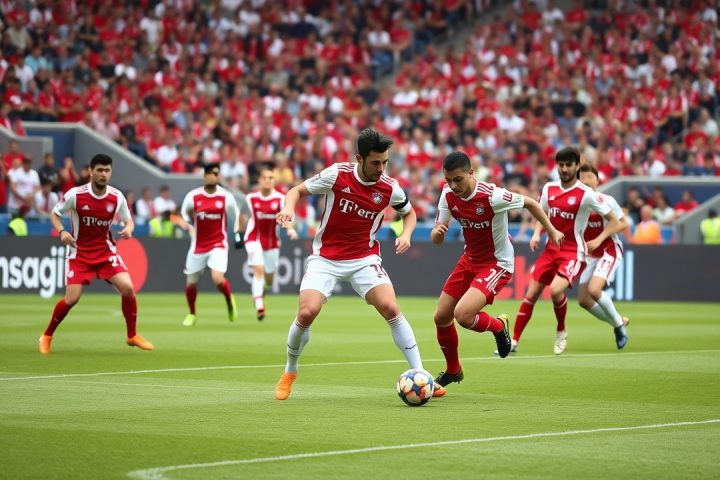UEFA Women’s Champions League Overview
The UEFA Women’s Champions League is set to kick off its third qualifying round on Thursday, with 18 teams competing for nine coveted slots in the newly structured league phase. This season marks a significant shift in the tournament’s layout, mirroring the changes made to the men’s competition, which now features an expanded 36 teams and a single league table rather than group stages.
Historical Changes and New Format
Historically, the Champions League had 16 teams divided into four groups of four, with the top two from each group advancing to the quarterfinals. This season, however, all 18 participating teams will vie for top positions in one consolidated table, allowing for two additional teams to join the competition. Automatic qualifications have been allotted to nine teams from the highest-ranked footballing nations, including former champions like Arsenal, as well as other notable clubs such as Lyon, Chelsea, and Barcelona.
Qualifying Rounds and Matchups
The remaining spots will be filled through the qualifying rounds, and teams that do not advance will enter a newly established event called the UEFA Women’s Europa Cup. In this year’s final qualifying round, teams will face off in pivotal matchups: Valerenga against Ferencvaros, Vorskla Poltava challenging OH Leuven, and several others, including BK Häcken versus Atlético Madrid.
League Phase Format
In terms of format, the new league phase will eliminate the bottom six teams after December, while those ranked between fifth and twelfth will enter knockout playoffs in February, aiming to secure a quarterfinal berth. The top four teams will automatically advance to the quarterfinals, which will unfold in March and April, and follow a two-legged knockout format leading up to a traditional one-legged final.
Draw and Match Regulations
A single draw on December 18 will establish the competition’s bracket without any country protection, enabling clubs from the same nation to potentially compete against one another in later rounds. The knockout phase will see matches determined by venues assigned based on ranking, favoring higher-ranked teams with home-field advantages in the resulting matchups.
Broadcasting and Europa Cup
The draw for the league phase occurs on September 19, transitioning from previous years’ group formats to fixture generation through pots ranked according to UEFA coefficients. Each of the 18 teams will play six matches against opponents selected from the three pots, with restrictions preventing clubs from facing teams from their own league and limiting encounters to a maximum of two clubs from the same nation.
For fans eager to watch all matches live, Disney+ will serve as the exclusive broadcasting platform, providing coverage for a total of 75 matches throughout the season. Additionally, information regarding the newly instituted UEFA Women’s Europa Cup indicates that it will include teams ranked from 8th to 24th in their respective countries, effectively creating opportunities for clubs displaced from the Champions League qualifying rounds.
The first qualifying rounds for the Europa Cup will commence shortly after the Women’s Champions League, on September 10, and the tournament will follow a similar two-legged knockout format leading to its final in late April or early May.
Conclusion
With these exciting developments, this season’s UEFA Women’s Champions League promises intense competition and a new chapter in women’s European football.




